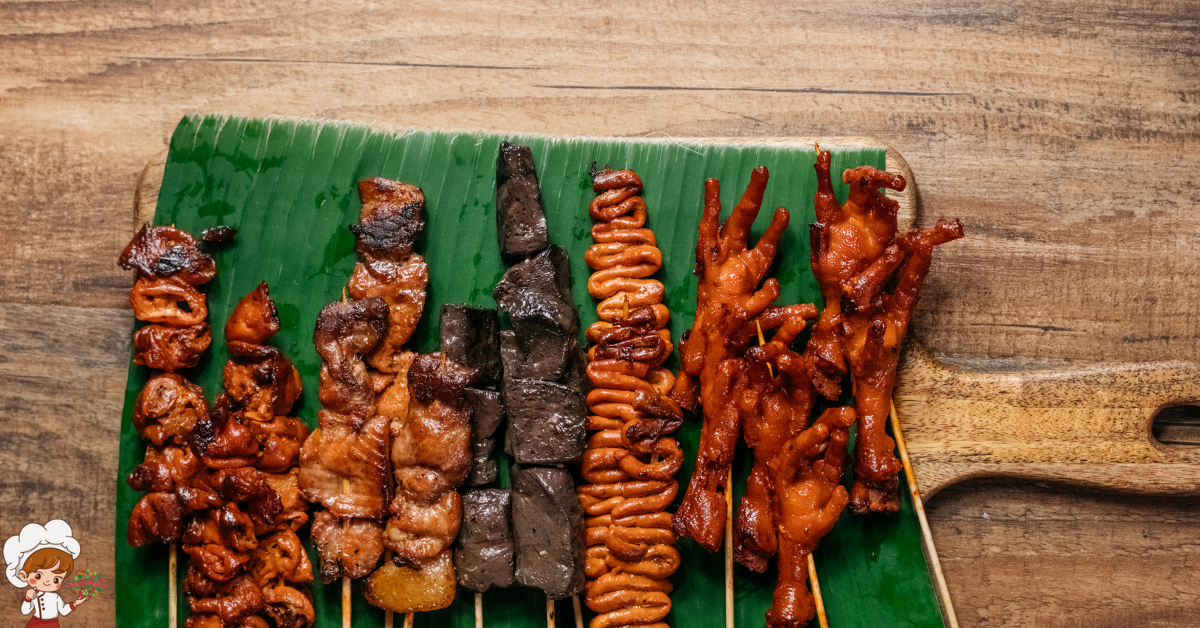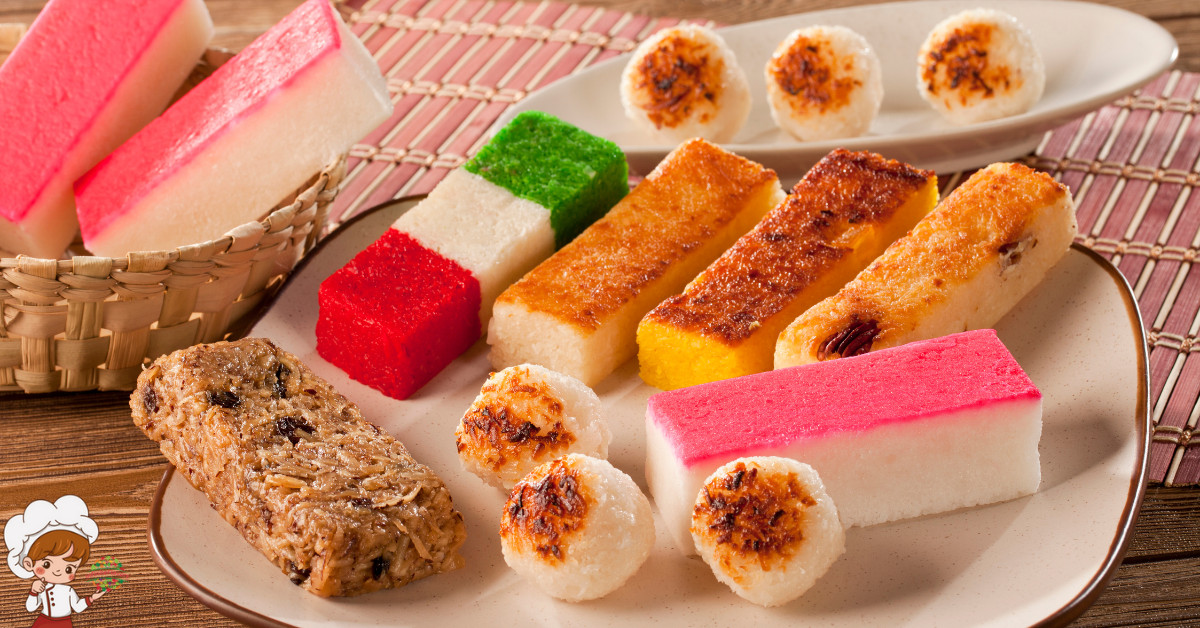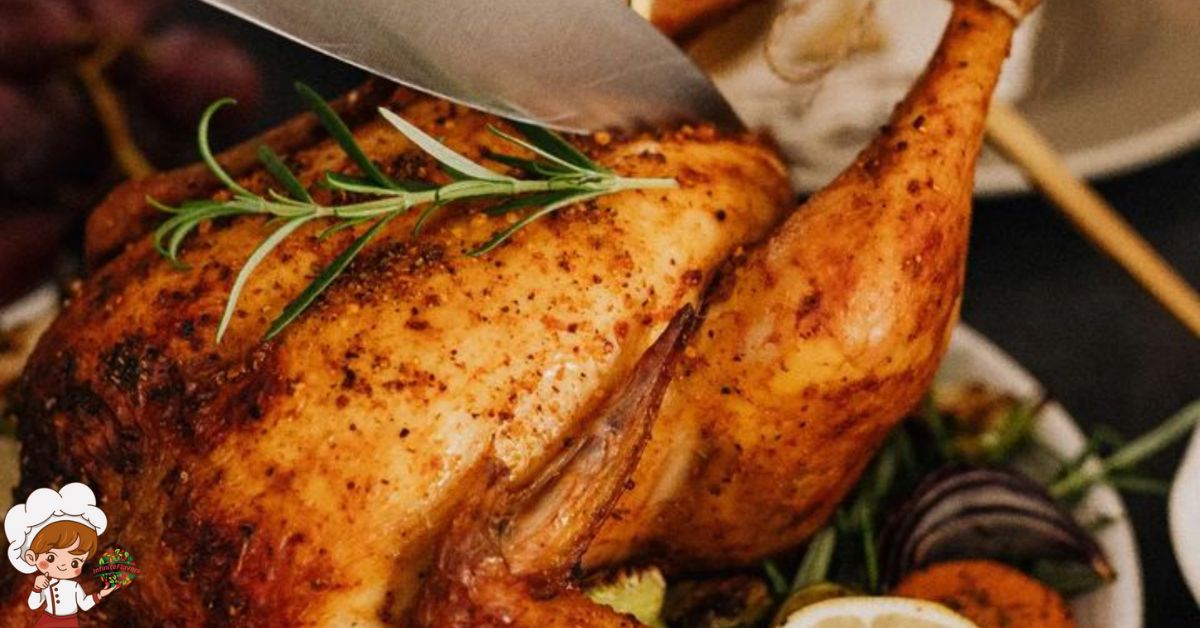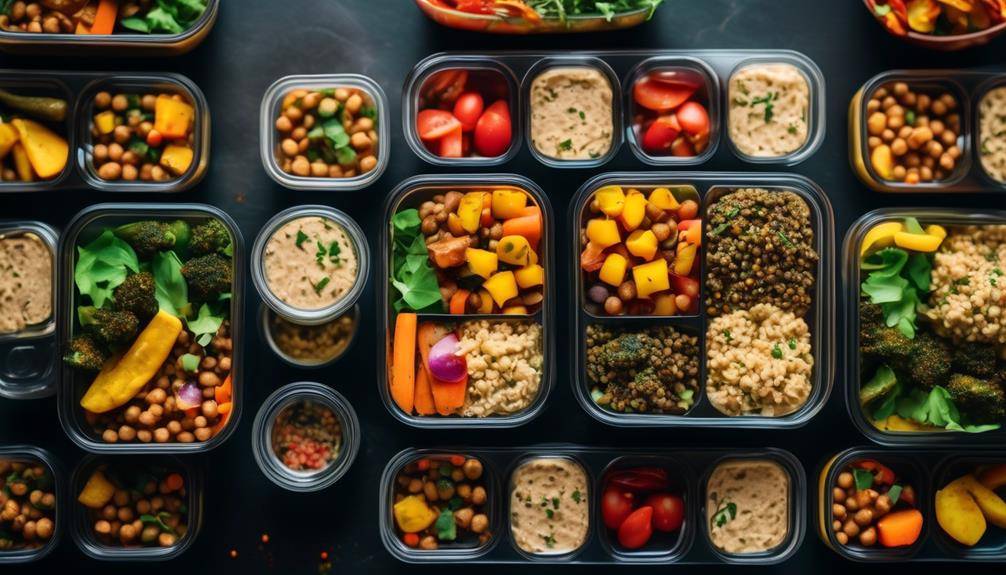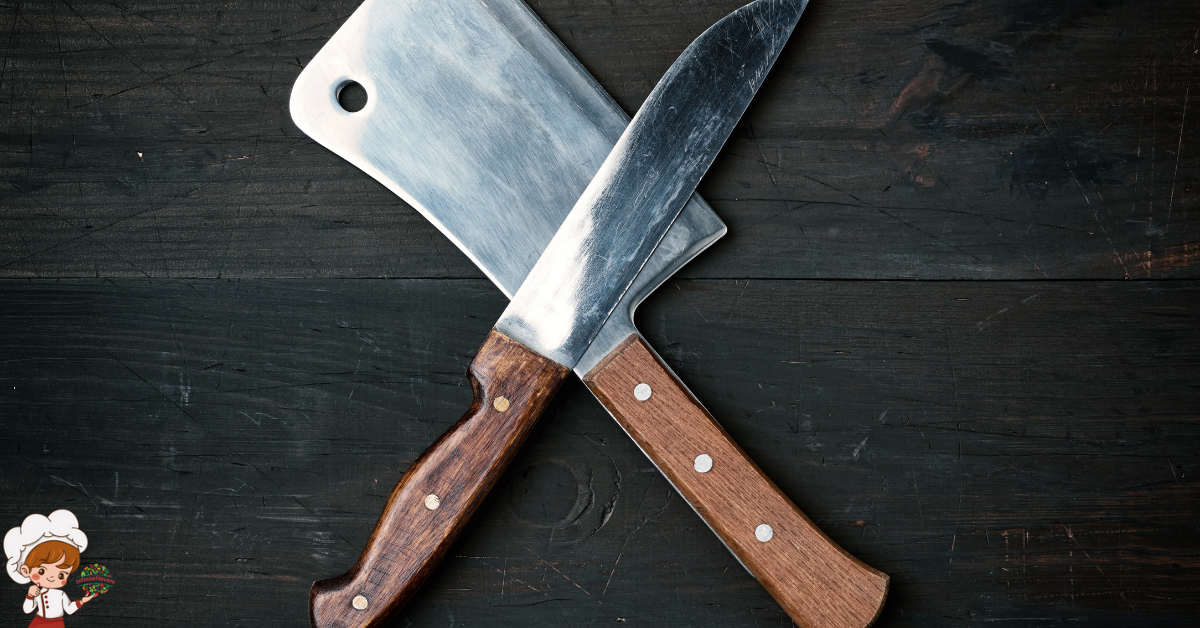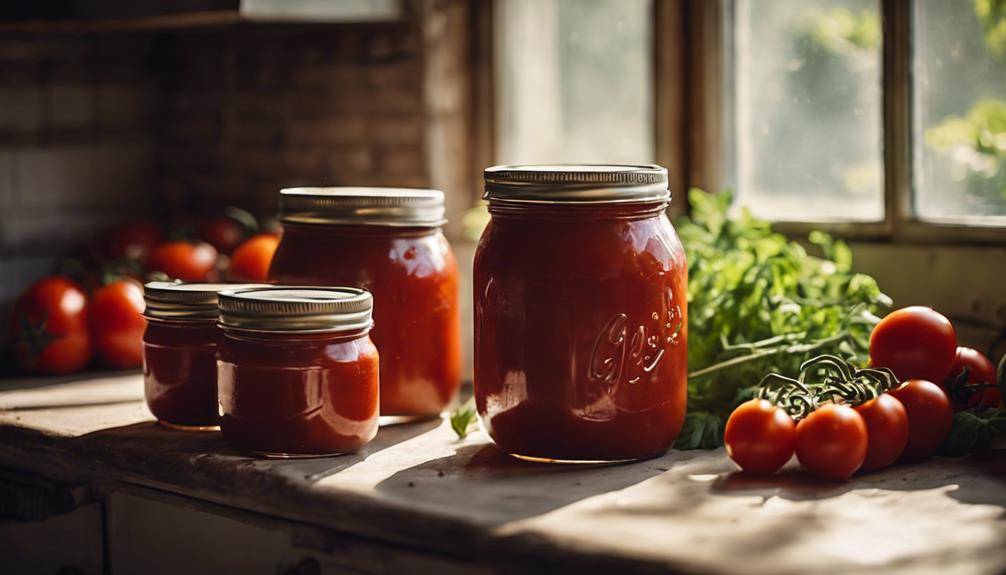The Popular Key Ingredients In Swedish Cuisine

What are Key Ingredients In Swedish Cuisine that highlight the country’s natural bounty? You’ll find fresh seafood like herring and salmon, often prepared through curing and smoking. Root vegetables are essential, offering sustenance during long winters. Berries such as lingonberries and blueberries add sweetness and vibrancy to dishes. Dairy products, including rich cream and butter, enhance flavors across the board. Grains, like rye and oats, are staples in daily meals. Don’t forget the herbs and spices, which add warmth and depth to traditional recipes. Each ingredient plays a crucial role, and as you explore further, you’ll uncover even more culinary treasures.
Fresh Seafood
When it comes to Swedish cuisine, fresh seafood is a cornerstone that you simply can’t overlook. The waters surrounding Sweden teem with a variety of fish and shellfish, making it an ideal location for seafood lovers. You’ll find everything from herring and salmon to shrimp and mussels, each prepared with care and respect for the ingredients.
Sustainable sourcing is a crucial part of the Swedish seafood culture. You’ll notice that many restaurants and markets prioritize fish that’s caught responsibly and in ways that protect marine ecosystems. When you choose seafood in Sweden, you’re not merely enjoying a meal; you’re participating in a movement toward environmental stewardship. This commitment to sustainability means you can savor your meal with the knowledge that it supports healthy oceans.
Seafood preservation methods are equally important in Swedish cuisine. Techniques like curing, smoking, and pickling not only enhance flavors but also extend the shelf life of seafood. For instance, gravlax, a popular dish made from cured salmon, showcases how preservation allows for a delightful culinary experience while respecting the freshness of the fish.
As you explore Swedish seafood, you’ll discover that each bite carries the essence of the sea and the care taken in its preparation. So, whether you’re enjoying a traditional dish or trying something new, remember that fresh seafood in Sweden is more than just a meal; it’s a celebration of nature and sustainability.
Root Vegetables
Swedish cuisine isn’t just about fresh seafood; it also celebrates the rich flavors of root vegetables. When you think of Swedish dishes, you can’t overlook the array of root vegetable varieties that play a vital role in creating hearty, comforting meals. Potatoes, carrots, turnips, and parsnips are just a few examples of the root vegetables that find their way into traditional Swedish recipes, showcasing the country’s agricultural heritage.
Using seasonal root usage is key to Swedish cooking. As winter sets in and fresh produce becomes scarce, these hardy vegetables provide essential sustenance. You’ll often find dishes like Janssons frestelse, a creamy potato casserole, or rotselleri (celery root) mash gracing the dinner table, reflecting the importance of seasonal ingredients. In fall, you might enjoy roasted root vegetables tossed with herbs, allowing their natural sweetness to shine.
Root vegetables are versatile; you can boil, roast, or mash them, and they complement a variety of proteins, from fish to meat dishes. Plus, they add a vibrant splash of color to your plate. If you haven’t already, experiment with different preparations to discover how these ingredients can transform a simple meal into something truly special. Embracing the flavors of Swedish root vegetables not only enhances your culinary skills but also connects you to the heart of Sweden’s culinary traditions. So, next time you’re planning a meal, don’t forget to include these delightful root vegetable varieties!
Berries and Fruits
In the heart of Swedish cuisine, berries and fruits play an essential role, adding vibrant flavors and natural sweetness to a variety of dishes. Sweden’s diverse landscape allows for a rich assortment of wild berries, such as lingonberries, blueberries, and cloudberries. You can experience the thrill of wild berry foraging, a beloved pastime for many Swedes. Picture yourself wandering through lush forests, gathering these juicy gems to take home. The taste of freshly picked berries is simply unmatched.
Once you’ve harvested your berries, you’ll want to make the most of them. Swedish culture embraces various fruit preservation techniques, ensuring that the bounty lasts well beyond the summer months. You might try making jam, where the sweet and tart flavors meld together beautifully, or perhaps you’ll opt for preserving them in sugary syrups. Each method captures the essence of the fruit, allowing you to savor the taste of summer all year round.
Berries and fruits also find their way into traditional dishes, like the classic lingonberry sauce served alongside meatballs or the delightfully sweet cloudberry sauce drizzled over desserts. Whether you’re enjoying a simple bowl of fresh berries or incorporating them into more complex recipes, they provide a revitalizing contrast to the hearty elements often found in Swedish cuisine. So, next time you’re in Sweden or even at your local market, remember to embrace these delicious, seasonal treats.
Dairy Products
When you think of Swedish cuisine, you can’t overlook the importance of dairy products like cream and butter. Sweden boasts a variety of creamy delights that enhance many dishes, along with a selection of popular cheeses that are staples in every meal. Let’s explore how these ingredients play a crucial role in creating the rich flavors of Swedish food.
Cream and Butter Varieties
Cream and butter are essential components of Sweden’s culinary landscape, contributing rich flavors and textures to a variety of dishes. In Swedish cuisine, you’ll find that cream is often used in sauces, adding depth and creaminess that elevates simple meals. Think about classic dishes like gravlax or meatballs served with a luscious cream sauce; it’s hard to resist!
Butter variations are equally important. Swedish butter is typically rich and creamy, making it perfect for baking or spreading on crispbread. You’ll also encounter flavored butters, such as those infused with herbs or garlic, which can enhance the taste of your favorite dishes.
If you’re feeling adventurous, try making your own butter at home. It’s a simple process that allows you to control the flavor and texture. Whether you’re using it in a traditional dish or as a base for your favorite sauces, you’ll appreciate the versatility of Swedish butter.
In essence, both cream and butter play a crucial role in creating the comforting and satisfying flavors that define Swedish meals. Embrace these ingredients, and you’ll bring a taste of Sweden into your kitchen!
Popular Cheese Types
Swedish cuisine boasts a delightful array of cheeses that reflect the country’s rich dairy heritage. You’ll find a range of cheese varieties, from creamy, soft cheeses to aged, hard options. One popular type is Västerbotten cheese, known for its robust flavor and crumbly texture, perfect for cheese pairings with fruits or crispbread.
Sweden’s cheese production has deep roots in cheese history, with traditional methods still in use today. Visiting local cheese markets, you can sample fresh selections and learn about cheese aging techniques that enhance flavor profiles.
Attending cheese festivals can deepen your appreciation for Sweden’s unique cheeses. You might even pick up a few cheese recipes to try at home, like a classic cheese pie or cheese-stuffed pastries.
Don’t forget the health benefits of these dairy delights; cheeses are rich in protein and calcium. Each cheese offers distinct textures and flavors, making it easy to find one that suits your palate. So whether you’re indulging in a rich blue cheese or a mild, creamy variety, you’re sure to enjoy the many delicious aspects of Swedish cheese.
Grains and Breads
Grains and breads are essential components of Swedish cuisine, providing both sustenance and flavor to everyday meals. You’ll find a variety of whole grains that form the backbone of many traditional dishes. Rye bread is particularly popular, known for its dense texture and robust flavor. It’s often enjoyed with butter or as a base for open-faced sandwiches.
When it comes to porridge dishes, oats take center stage. Oat varieties like steel-cut and rolled oats are staples in Swedish kitchens, often served warm with fruits or nuts for breakfast. Barley uses extend beyond porridge; it’s frequently included in soups and stews, adding a hearty element to the meal.
Crispbread types, or knäckebröd, are another cornerstone of Swedish bread culture. These crunchy breads are made from rye flour and are perfect for topping with cheese, fish, or spreads. You’ll appreciate the wide range of options available, each with its unique texture and flavor.
For those with dietary restrictions, gluten-free options are increasingly available, allowing everyone to enjoy the rich traditions of Swedish bread-making. Proper grain storage is crucial to maintaining the freshness and quality of grains, ensuring you can enjoy these delicious staples for longer.
Game and Meats
When you think of Swedish cuisine, traditional game meats are sure to come to mind. You’ll discover various cooking techniques that enhance the flavors, along with regional variations that reflect local ingredients. Let’s explore how these elements come together to create memorable dishes.
Traditional Game Meats
In many Nordic households, game meats take center stage, showcasing the region’s rich hunting traditions. You’ll often find dishes featuring reindeer, moose, and wild boar, all of which reflect the deep connection to the land and its resources. These meats offer unique flavors that can’t be replicated by farmed animals, making them a cherished part of Swedish cuisine.
Game preservation is another key aspect of enjoying these meats. Traditional methods like smoking, drying, and curing have been passed down through generations, allowing families to savor the bounty of the hunt throughout the year. When you embrace these practices, you’re not just preparing food; you’re participating in a cultural legacy that values sustainability and respect for nature.
As you explore the world of traditional game meats, you’ll discover that each dish tells a story. Whether you’re enjoying a hearty moose stew or savory reindeer meatballs, you’re tasting the history of a community that thrives on its hunting traditions. So, when you sit down to enjoy these dishes, remember the craftsmanship and heritage that have shaped them into beloved staples of Swedish cuisine.
Cooking Techniques and Methods
Mastering the art of cooking game meats requires a blend of traditional techniques and modern methods to highlight their unique flavors. You’ll want to start by selecting the right cooking method based on the type of game meat you’re working with. For tender cuts, consider grilling methods that let the natural flavors shine through. Marinating the meat beforehand can add depth, while high heat helps to achieve a perfect sear.
For tougher cuts, sautéing techniques come into play. You can sear the meat in a hot pan to lock in juices, then finish cooking it slowly to break down connective tissues. This method guarantees that the meat remains moist and flavorful. Pairing game meats with complementary ingredients, such as root vegetables or robust sauces, enhances the overall dish.
Don’t forget about seasoning. Using fresh herbs and spices can elevate your game meat preparations. Finally, always let your cooked meats rest before slicing; this allows juices to redistribute, making every bite tender and full of flavor. By mastering these cooking techniques and methods, you’ll celebrate the richness of Swedish cuisine with every meal.
Regional Flavor Variations
Swedish cuisine showcases a rich tapestry of regional flavors, especially when it comes to game and meats. Each region has its own unique offerings, influenced by the local environment and traditions. In the northern parts, you’ll find hearty dishes made from reindeer, often slow-cooked to enhance its tender texture. This meat reflects the Sámi culture and their deep connection with nature.
Traveling south, you’ll experience regional specialties like elk and wild boar, which are staples in many households. These meats are typically marinated and smoked, highlighting the local influences of the forests that provide them.
In coastal areas, you might come across game birds like grouse, prepared with fresh herbs and served alongside seasonal vegetables. The flavors are vibrant and distinctly Swedish, showcasing how the landscape shapes culinary practices.
You’ll also notice the tradition of pickling and preserving meats, a technique that dates back centuries, meant to extend the shelf life during harsh winters. So, whether you’re enjoying a game stew in the north or savoring smoked elk in the south, you’re experiencing a delicious reflection of Sweden’s rich regional diversity.
Herbs and Spices
Explore the aromatic world of herbs and spices that elevate Swedish dishes to new heights. In Swedish cuisine, the right herb blends can transform even the simplest ingredients into a delightful experience. You’ll often find fresh dill, chives, and parsley as staples in many traditional dishes. Dill, in particular, is a favorite, adding a distinct flavor to pickled herring and potato salads.
When it comes to spice profiles, you’ll notice that many Swedish recipes rely on the warm notes of allspice and the subtle heat of white pepper. These spices are key players in classic dishes like köttbullar (meatballs) and gravlax, where they enhance the flavors without overwhelming the palate.
Cardamom is another essential spice, often used in sweet pastries like kanelbullar (cinnamon buns). Its unique flavor profile brings warmth and a hint of exoticism to the table. If you’re keen to recreate authentic Swedish flavors, consider experimenting with these herbs and spices in your cooking.
Don’t forget about the versatility of herb blends, which can save you time while still delivering depth. You might mix dried herbs like thyme, oregano, and basil for a convenient seasoning that works well with meats and stews.
Preserved Foods
When you explore preserved foods in Swedish cuisine, you’ll find a rich array of techniques that enhance flavors and extend shelf life. From pickling vegetables to traditional curing methods for meats, these practices play a crucial role in the culinary landscape. Plus, you’ll encounter a variety of fermented foods that add unique tastes to the Swedish table.
Pickling Techniques Overview
Pickling is a time-honored technique that preserves the vibrant flavors and textures of various foods while extending their shelf life. You can start by creating brine solutions, which are essential in the pickling process. These solutions typically consist of vinegar types, water, salt, and sugar, depending on your desired flavor profile.
Next, consider incorporating pickling spices, like dill, mustard seeds, or coriander, to elevate the taste. If you’re feeling adventurous, explore fermentation processes, where natural bacteria transform sugars into lactic acid, offering a unique tanginess to your pickled goods.
Using seasonal produce is another key element. Fresh cucumbers, carrots, and beets not only taste better but also provide excellent texture contrasts when pickled. As you experiment with different preservation methods, you’ll discover how each one can enhance flavors and prolong the shelf life of your favorite foods.
Don’t forget to adjust the balance of your ingredients for personalized flavor enhancements, ensuring each jar reflects your culinary preferences. By mastering these pickling techniques, you’ll enjoy delicious, preserved delights year-round!
Traditional Curing Methods
Curing is an ancient method that transforms raw meats and fish into flavorful, preserved delicacies. In Swedish cuisine, this technique plays a crucial role, especially when it comes to dishes like cured herring and smoked salmon. You’ll find that salt preservation is a key component in these processes, allowing ingredients to last longer while enhancing their taste.
When preparing cured herring, the fish is typically soaked in a brine solution, often mixed with spices and sugar. This not only preserves the fish but also infuses it with rich flavors, making it a staple in many Swedish meals. Smoked salmon, on the other hand, undergoes a different kind of curing, where the fish is salted and then exposed to smoke, adding complexity to its taste profile.
Although fermentation techniques are essential in Swedish cuisine, they’re distinct from traditional curing methods. Curing focuses primarily on the use of salt and smoke to enhance and preserve the ingredients. So, whether you’re enjoying a classic smorgasbord or a simple sandwich, remember the craftsmanship behind these traditional curing methods that elevate Swedish flavors to new heights.
Fermented Food Varieties
Fermented foods hold a special place in Swedish cuisine, showcasing a unique method of preservation that enhances flavors and adds depth to dishes. One of the most iconic examples is sour herring, which is often served at festive gatherings. This dish not only tantalizes your taste buds but also reflects the importance of preserving fish in a country surrounded by water.
Fermented cabbage, known as “surkål,” is another staple that complements many meals. It’s often paired with traditional bread to create a hearty and satisfying experience. You might find it surprising that probiotic drinks, such as filmjölk, are also a significant part of the culture, promoting gut health while delighting your palate.
Pickled vegetables, including cucumbers and beets, provide a burst of flavor and color, making them essential additions to various dishes. The cultural significance of these fermented varieties can’t be overstated; they connect you to Sweden’s history and culinary traditions. By embracing these foods, you’re not just enjoying unique flavors, but also participating in a time-honored practice that’s deeply rooted in Swedish identity.
Traditional Sauces
While traditional Swedish cuisine is known for its hearty flavors, the sauces play an essential role in elevating dishes to new heights. You’ll find that each sauce complements specific meals, enhancing the overall dining experience. One of the most iconic is lingonberry sauce, which pairs perfectly with meatballs and adds a delightful tartness. Mustard sauce is another favorite, often served with herring or pork, offering a tangy kick that balances rich flavors.
When it comes to gravy varieties, you can’t go wrong with a classic brown gravy, typically drizzled over roasted meats. Dill sauce, with its fresh and aromatic notes, is commonly enjoyed with salmon, making it a staple in many households. If you’re looking for a zing, horseradish cream provides a bold, spicy contrast, especially with beef dishes.
For a more traditional touch, try the remoulade, which features a blend of mayonnaise, mustard, and pickles, perfect for seafood. Cheese sauce is also a beloved option, particularly with baked dishes like macaroni or vegetables. Additionally, berry compote can serve as a sweet, fruity complement to pancakes or desserts.
Lastly, don’t overlook white sauce, a versatile base for many dishes, and curry sauce, which brings a unique twist to Swedish fare. With these sauces, you’ll not only honor the traditions of Swedish cuisine but also create a memorable meal that showcases the beauty of its flavors.
Sweets and Pastries
Swedish cuisine isn’t just about savory dishes; it also boasts a delightful array of sweets and pastries that tempt the palate. When you think of Swedish treats, cinnamon buns (kanelbullar) often come to mind. These warm, buttery delights, flavored with cinnamon and sugar, are perfect for fika—a cherished coffee break. You can’t overlook chocolate balls (chokladbollar), either. They’re no-bake treats made from oats, cocoa, and butter, rolled in coconut or chopped nuts.
For something more festive, consider saffransbullar, or saffron buns. These golden pastries are traditionally served during Advent and are infused with a rich saffron flavor. Almond cakes (mandeltårta) are another favorite, often crowned with a layer of marzipan figures that make them visually stunning.
One of the most iconic Swedish cakes is the princess cake (prinsesstårta), a layered treat of sponge cake, pastry cream, and whipped cream, all enveloped in a smooth layer of green marzipan. Cardamom rolls (kardemummabullar) are another delightful option, offering a unique spicy twist.
If you’re in the mood for something fruity, try lingonberry bars or blueberry tarts, which showcase the natural sweetness of these berries. Don’t forget to sample oat cookies (havregrynskakor), a simple yet satisfying treat perfect for any occasion. Each of these sweets offers a taste of Sweden’s rich culinary heritage, enticing you to indulge in their delectable offerings.
Frequently Asked Questions: Key Ingredients In Swedish Cuisine
How Has Swedish Cuisine Evolved Over the Years?
Swedish cuisine’s evolved considerably, influenced by historical traditions and modern adaptations. You’ll notice how local ingredients blend with international flavors, creating a unique culinary experience that reflects both the past and contemporary dining trends.
What Cooking Methods Are Commonly Used in Swedish Dishes?
In Swedish cooking, you’ll often use grilling techniques to enhance flavors, while pickling methods preserve seasonal ingredients. These approaches create a delightful contrast, showcasing the versatility and tradition that defines Swedish culinary practices.
Are There Any Regional Variations in Swedish Cuisine?
Yes, there are regional variations in Swedish cuisine. You’ll discover unique regional specialties that highlight traditional ingredients, like seafood in the west and root vegetables in the north, showcasing the diverse flavors across Sweden’s landscapes.
How Do Seasonal Changes Affect Swedish Cooking?
Seasonal changes really shape your cooking. In spring, you’ll enjoy fresh vegetables, while winter calls for traditional preservation methods like pickling and curing. Embracing seasonal ingredients keeps your meals vibrant and connected to nature’s cycles.
What Is the Cultural Significance of Food in Sweden?
In Sweden, food traditions reflect community values. You’ll find communal meals bringing families together, celebrating life’s moments. Sharing dishes fosters connection, ensuring everyone feels included and cherished, reinforcing the importance of togetherness in Swedish culture.
Conclusion
In Swedish cuisine, you’ll discover a delightful blend of fresh seafood, hearty root vegetables, and a variety of berries and fruits that highlight the country’s natural bounty. Don’t forget the rich dairy products, wholesome grains, and traditional sauces that elevate each dish. Preserved foods and sweet pastries add the perfect finishing touch. Embrace these key ingredients, and you’ll truly appreciate the unique flavors and culinary traditions that make Swedish cuisine so special. Enjoy your culinary adventure!



